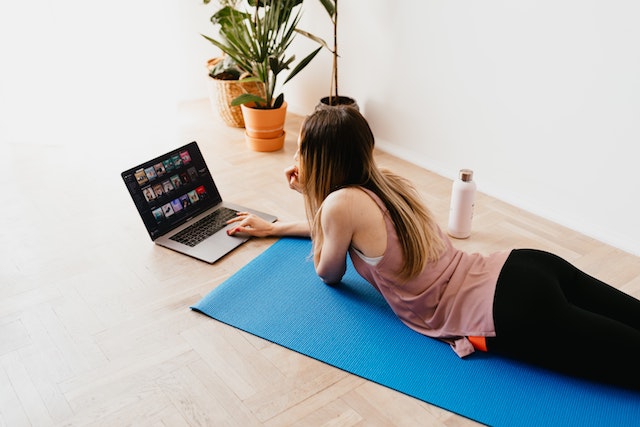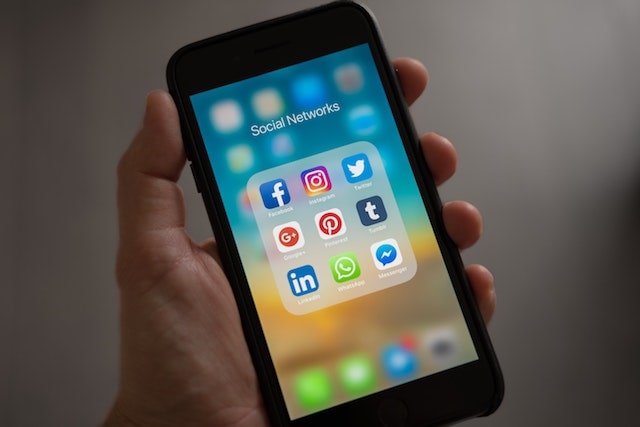Personal trainers, gym owners and other health and fitness experts have been hit hard by the COVID-19 pandemic. The fitness business and social distancing guidelines are difficult to merge simply due to the high-touch nature of fitness centers. This makes them a higher-than-average health risk while the coronavirus is circulating. Accordingly, most gyms were quick to close, and very few have made plans to reopen at full capacity.
If you want to preserve your business — or continue building it — you’ll be glad to know there are many options available to you, as long as you’re willing to adapt. So how can you adapt your personal training or fitness business to accommodate social distancing and closed gyms?
Let’s explore a few options.
Personal training online

Rather than meeting people in the gym, you can meet with them virtually, relaying video feeds and communicating in real-time with your clients.
There are a handful of major options here:
Filmed video
Filmed videos, which you can publish on a website or on a channel like YouTube, have several advantages. You’ll have the ability to edit these videos before they’re released, so you can demonstrate a perfect performance while also adding extra effects and polishing the quality.
You can also build a permanent archive of videos, which can continue generating revenue indefinitely. However, filmed videos lack the personal engagement that’s available with other methods.
Related: How to make money on YouTube — The expert guide
Video conferencing/personal training
Alternatively, you can use video chatting to work with clients one-on-one. After setting up appointments on Skype, Zoom, or even Gmail, you can guide your clients through at-home workouts and coach them on their progress. You can also demonstrate new exercises and movements as needed.
Another option is live streaming your workouts, which you can do using a platform like Twitch. Here, you’ll be able to mass-broadcast your routines for many people at once and interact with them in the form of comments and responses. Again, you miss out on the personal interaction element, but it enables you to reach many people at once.
Note that it’s possible (and perhaps most valuable) to use multiple methods simultaneously. For example, you could live stream once a week, publish two new filmed videos per week, and still meet with clients via a live video call for individualized sessions. It all depends on your goals.
Adapting a fitness business for social distancing: Workouts
No matter which online approach you use, you’re going to be limited in terms of the range of exercises you can perform. You may have workout equipment in your home, like a treadmill or a cable machine, but you can’t guarantee that your clients will have this equipment available to them.
If and when you meet individually with clients, you can develop routines based on the equipment they have available, but if you’re targeting a broader audience, you’ll need to appeal to the most minimal possible setup.
Bodyweight exercises (calisthenics), and exercises using household objects like canned goods or bags of sand are ideal here. Yoga and other forms of stretching are other possibilities.
Fitness options for new audiences
One challenge you’ll encounter when trying to create a fitness business that accounts for social distancing is competition. There are many personal trainers transitioning online because of gym closures and health concerns. How are you going to stand out?
Your best option is to target an audience that differs from your competitors’ audiences. These are just some ideas to get you started:
- Newcomers. Can you build an exercise program that caters to total beginners, who have little to no experience working out?
- Kids. Lots of parents are staying home with their kids and looking for new activities to keep them busy and healthy. Can you provide exercise routines that parents can do with their children?
- Niche workouts. Niche workouts, like those tailored to people with specific needs or abilities, can also capitalize on a narrow audience — where you’re unlikely to face competition.
- Broad audiences vs. solo clients. You’ll also need to think about your audience segments, and whether they differ between your broad streaming/filmed video audience and your individual clients.
Keeping in touch with clients

If you want your business to succeed remotely, you’ll need some way to stay in contact with your current viewers and clients (and simultaneously attract a new audience).
- Website and announcements. First, you’ll need to create a website, which is easy if you use GoDaddy’s Websites + Marketing and built-in marketing tools. Once you establish your brand presence here, you can make announcements and advertise your services.
- Blogging and new videos. You should also pick up blogging, which functions as a way to inform your clients, convert visitors, build your reputation, and market your website all at once. Depending on the nature of your website, you may also be able to upload videos directly here.
- Social media. Social media is one of the best marketing platforms for personal trainers since it allows you to promote all your content and directly engage with your followers.
- Email marketing. Similarly, you can make use of email marketing, keeping your subscribers up to date on the latest fitness social distancing news and advertising your latest content.
Related: Beginner’s email marketing guide for small businesses
Planning for the future
Sooner or later, gyms will start to reopen and people will head back to the gym. There will be a phase where social distancing is still recommended, but eventually, we’ll get back to something close to “normal.”
When that happens, how is your personal training online business going to adapt? There are many ways to answer this question, but the most important thing is to carefully consider and define your own answer.
For example, will you set up your online business to remain sustainable for the indefinite future, so you can continue using it as a primary source of income? Or are you planning to transition back to working at the gym, keeping your online endeavors as a side gig?
You won’t be able to personally train clients the way you used to, at least for the next several months (and maybe longer). But if you’re willing to adapt and reframe your business, you’ll have a good chance at generating revenue and building a new client base.
Editor’s note: Looking for the perfect online solution for your fitness business in the era of social distancing and beyond? GoDaddy’s Websites + Marketing has you covered. From hosting livestreams to getting your business found, we’re here to help each step of the way.
The post Adapting your fitness business for social distancing appeared first on GoDaddy Blog.




